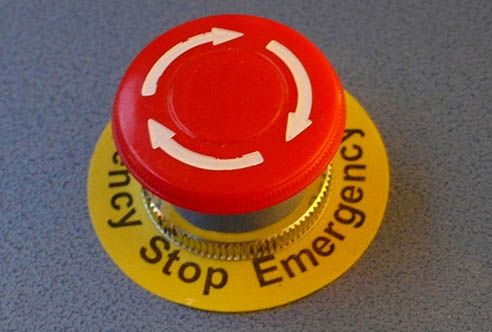
Functional Safety is the part of the overall safety of a system or piece of equipment that depends on a system or equipment operating correctly in response to its inputs.
The concept applies to everyday life and every industry you can think of. It is fundamental for most safety-related systems. The oil and gas industry, nuclear plants, the manufacturing sector, your car, medical devices, transportation all rely heavily on Functional safety to achieve safety in areas where the operation of equipment can give rise to hazards.
Functional Safety
Safe function of a device or system — Functional safety is part of the overall safety of a system or piece of equipment and generally focuses on electronics and related software. It looks at aspects of safety that relate to the function of a device or system and ensures that it works correctly in response to commands it receives. In a systemic approach Functional safety identifies potentially dangerous conditions, situations or events that could result in an accident that could harm somebody or destroy something. It enables corrective or preventive actions to avoid or reduce the impact of an accident.
The concept applies to everyday life and every industry you can think of. It is fundamental for most safety-related systems. The oil and gas industry, nuclear plants, the manufacturing sector, your car, medical devices, transportation all rely heavily on Functional safety to achieve safety in areas where the operation of equipment can give rise to hazards.
Tolerable risk
The aim of Functional safety is to bring risk down to a tolerable level and to reduce its negative impact; however, there is no such thing as zero risk. Functional safety measures risk by how likely it is that a given event will occur and how severe it would be; in other words: how much harm it could cause.
Applications
Functional safety is the best way of reducing inherent risks in hazardous industrial processes both within a factory or chemical plant and out in the field. An automatic valve closure mechanism will ensure that dangerous chemicals are mixed in exactly the required quantities.
A crane safe load indicator will avoid that overloading will collapse the crane and kill workers or innocent bystanders. Sensors or LASER barriers will automatically shut-down a robot, when a human or object enters its activity range, preventing injuries or avoiding potentially costly damage to machinery. A pressure valve will open or close precisely when it is electronically given the instruction to do so. When such security-devices fail to operate as they should, for example during deep-sea oil drilling or during the filling of a chemical tank, major disasters can ensue.
Many systems today are designed to automatically prevent dangerous failures or to control them when they arise.
Such failures can arise for example from:
So called electrical, electronic or programmable safety-related systems (E/E/PE) cover all the parts of a device or system that carry out automated safety functions. This includes everything from sensors, through control logic and communication systems, to final actuators, including any critical actions of a human operator as well as environmental conditions.
Many safety-related systems that would have used electro-mechanical technology or solid-state electronics now use programmable electronics instead. Devices such as programmable controllers, programmable logic controllers (PLCs) and digital communication systems (e.g. bus systems) are part of this trend. Furthermore, enabling technologies, such as application specific integrated circuits (ASICs), micro-processors, and intelligent sensors, transmitters and actuators, are increasingly being integrated into products and systems.
AXYS Consulting can provide assistance with the management of Functional Safety in both the process industry and in mining and other industries as we are Functional Safety Engineers in both Safety Instrumented Systems (TÜV Rheinland, SIS) and Machinery (TÜV Rheinland, Machinery )